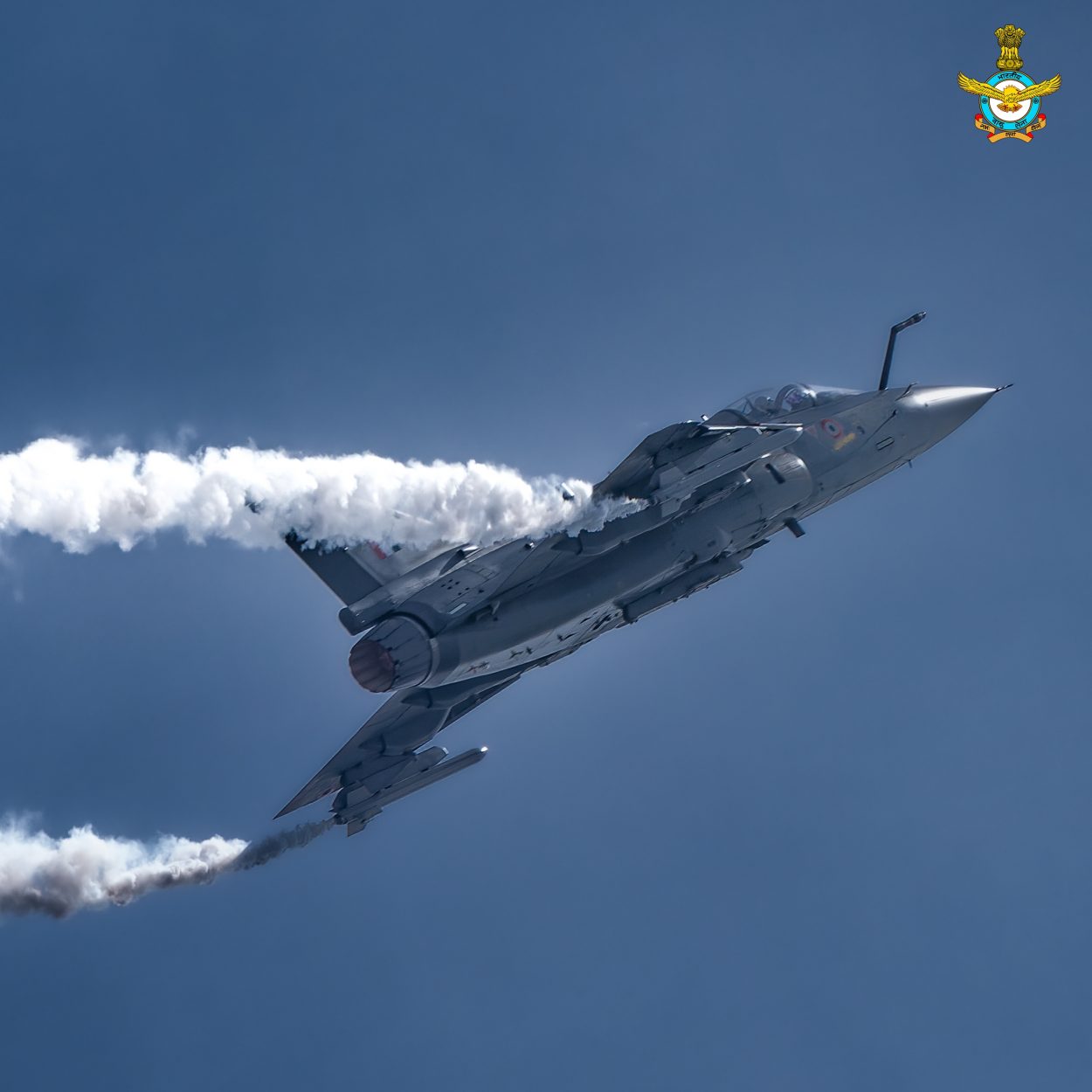Nigeria has shown interest in the Indian-built Light Combat Aircraft (LCA) Tejas, Light Combat Helicopter (LCH) ‘Prachand,’ Light Utility Helicopter (LUH), and Advanced Light Helicopter (ALH) ‘Dhruv.’
A few days ago, Africa’s most populous country approved inking of defense deals worth US $1 billion, aimed at helping Nigeria become self-reliant in defense manufacturing.
A HAL official confirmed to the EurAsian Times that a Nigerian delegation had seen the demonstration of the aircraft. The Nigerians are, however, yet to fly them. The negotiations for these military purchases are still in preliminary stages.
Hindustan Aeronautics Limited (HAL), which manufactures these military aircraft, has trained six pilots of Nigerian Army Aviation on Chetak Helicopters. Phase I of the training was completed in December 2021 and the second phase was completed by December 2022. Each Nigerian Army Aviation officer was given 70 hours of flying training as part of the training.
India has been offering LCA, ALH, and LUH to Nigeria, saying the platform will augment the strength of the Nigerian forces. Defense Advisor to Nigerian High Commission in India Commodore Anthony Victor Kujoh noted in 2022: “Nigeria would not only like to further enhance the business relationship with HAL for training, but also towards asset acquisition.”
In 2020, the Nigerian Army and Air Force indicated an interest in acquiring combat helicopters. The Army is keen on attack helicopters to give air support to its field-deployed troops in the northeastern region.
The helicopters will be required to conduct ground attacks and fend off air attacks from small drones. They would also be conducting armed escort and tank plinking.

The Nigerian Army blamed the lack of airpower for the prolonged battle with the Boko Haram insurgents. The service also contended that it needed its own “air force to deal with the insurgents swiftly.”
Besides HAL, European aircraft manufacturer Airbus and Turkish TAI have pitched their helicopters to Nigeria.
Turkish TAI has offered the T-129 ATAK chopper at a price of approximately US$45 million per piece. It is a five-ton, twin-engine, multi-role attack helicopter. It was originally produced under license from the Italian-British company AgustaWestland and based on the A129 Mangusta. AgustaWestland is now Leonardo Helicopters.
Airbus is also competing with its Tiger HAD multi-role helicopter, designed to perform armed reconnaissance, air or ground escort, air-to-air combat, ground fire support, destruction, and anti-tank warfare. Its price is estimated to be around US$68 million.
Contrary to this, Indian LCH can also be deployed in various roles, including tracking slow-moving aerial targets, insurgency, destroying enemy defenses, search and rescue, anti-tank, and scouting. It comes at one-third of the price of the Turkish T-129 ATAK helicopter at approximately US$17 million.
A Shot In The Arm For LCH
India’s first indigenous multi-role attack helicopter, LCH Prachand, was boosted when Argentina signed a Letter of Intent in July 2023 to purchase 20 units of LCH for its armed forces.
The Indian Army and the Indian Air Force inducted the LCH in its fleet in 2022. The Nigerian Army intends to deploy these aircraft on its border with Pakistan and China.
The LCH is the only helicopter operating at 5,000 meters with a considerable load of weapons and fuel. This means LCH can operate at the world’s highest battleground- the Siachen Glacier. After the Russian Mi-25 and Mi-35 in IAF’s fleet proved ineffective during the Kargil Conflict against Pakistan in 1999, the Indian defense establishment started building a lighter, stealthier, and more maneuverable attack helicopter.
Photo Courtesy: Vijainder K Thakur
During its testing, the LCH landed at a forward base in the region at 4,700 meters above sea level with a 500-kg load. LCH ‘Prachand’ is powered by twin Shakti engines, manufactured as part of a collaboration between HAL and France’s Safran company. The helicopter can fly at a maximum speed of 288 mph and has a combat radius of 500 km.
The pilot and co-pilot, known as the Weapon Systems Operator (WSO), sit in tandem in a glass cockpit and are protected by armored panels.
The weapon complement includes a 20mm nose gun in the front, capable of firing 800 rounds per minute from a range of up to 2 km. A 70mm rocket pod is mounted on the stub wing, with a direct firing range of up to 4 km and indirect up to 8 km.
Above the gun is an electro-optical pod for long-range day and night surveillance and target tracking. Anti-tank guided missile ‘Dhruvastra’ and French air-to-air missile ‘Mistral-2’ have a maximum interception range of 6.5 km.
The helicopter uses radar-absorbing material to lower radar signature and has a significantly crash-proof structure and landing gear. A pressurized cabin offers protection from nuclear, biological, and chemical (NBC) contingencies. The helicopter also has a countermeasure dispensing system that protects it from enemy radars or infrared seekers of enemy missiles.
The Billion-Dollar Defense Deal
The billion-dollar deal signed between the Defense Corporation of Nigeria (DICON) and the Managing Arm of the Military-Industrial Complex of the Indian government has improved the prospects of future military hardware sales to the African country.
Under the agreement, the Indian Military-Industrial Complex will help DICON achieve 40 percent self-reliance in military hardware manufacturing by 2027.
In the beginning of 2023, India gathered officials from 31 African countries to showcase its domestically made helicopters, drones, and artillery guns. During the gathering of African officials, the Indian military simulated operations featuring helicopters, armored vehicles, and bomb disposal robots. Also on display were assault rifles, artillery shells, and models of missiles.
The gathering was followed by nine days of multilateral maritime drills and the Africa-India field training exercise (AFINDEX-2023), with soldiers from 23 African countries, including delegates from Ethiopia, Egypt, Kenya, Morocco, Nigeria, Rwanda, and South Africa participating.
- Ritu Sharma has been a journalist for over a decade, writing on defense, foreign affairs, and nuclear technology.
- She can be reached at ritu.sharma (at) mail.com